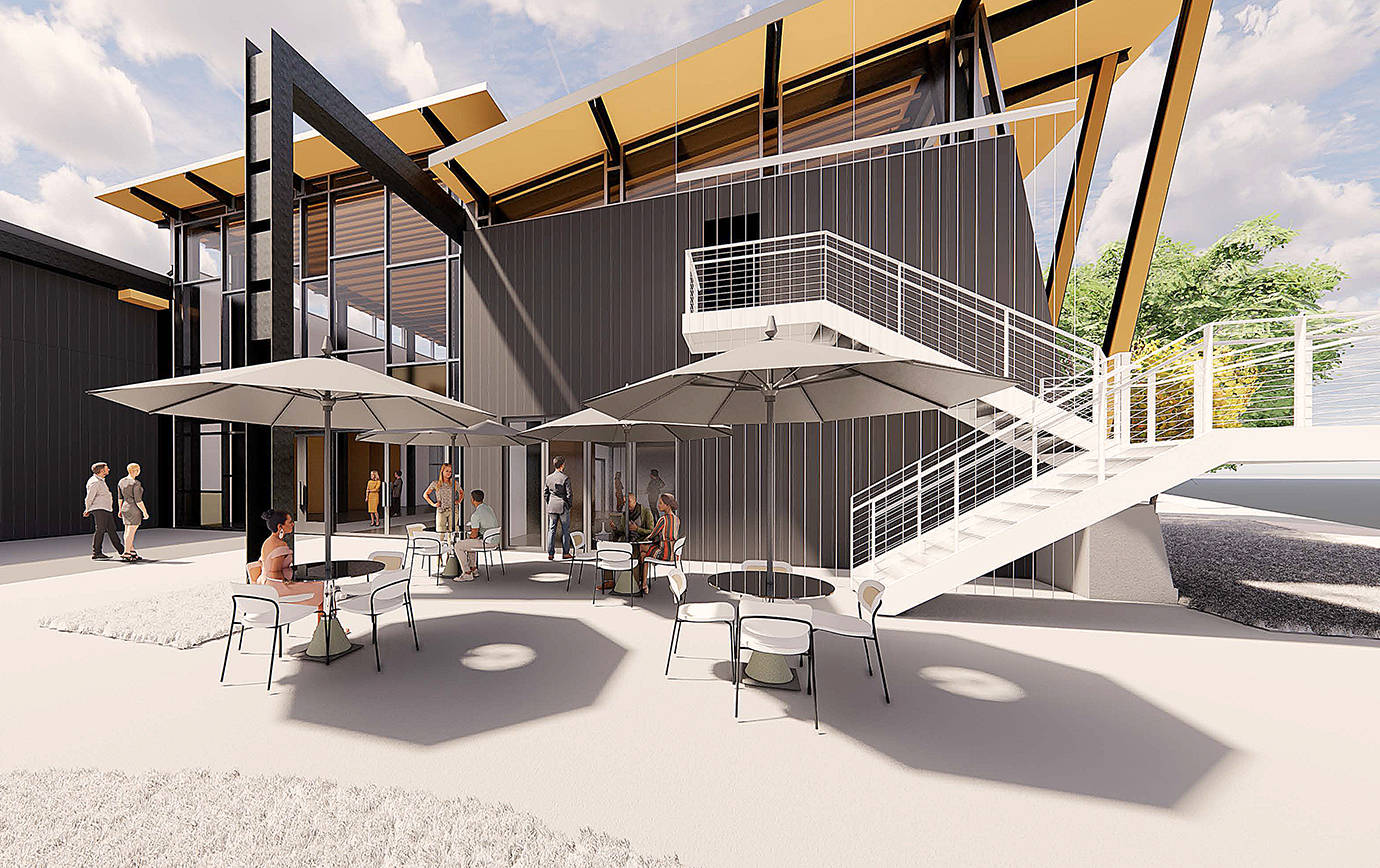The city of Aberdeen will commit $7 million to the construction of the Gateway Center.
The large majority of the City Council approved the move on Wednesday.
Mayor Pete Schave said the financial commitment from the city is necessary for the yet-to-be-hired Gateway Center project manager to show the city is serious about the construction of the building, which will better position the city for legislative funding for the remainder of the nearly $14 million project. The $7 million figure was one he came to after discussion with local legislators, he said.
The discussion kicked off with the history of the project provided by Cary Bozeman, who has been involved with the project since 2013 when he was called in as a paid consultant under then-Mayor Bill Simpson. Within six months, “I put the contract aside and said I’ll do this for nothing. I’ve been doing this for eight years,” he said.
He and others were able to procure about $3 million in funding from the state for the project, which has been used to purchase the land, demolish the Pourhouse Tavern and the old Selmer’s Building that once stood there, develop a landscaped parking area, and produce the architectural construction drawings.
The plan for the building is a sound investment, said Bozeman, evident by the “Downtown Aberdeen Community Planning Assistance report,” drafted by a team of “25 of some of the best planners in the state” and paid for by a Washington State Department of Commerce grant.
“They all agreed that we were doing the right thing,” said Bozeman of the planners who drafted the report. “They wrote a complete analysis of our plan, and they approved it, and they thought it was a good one.”
Council member Liz Ellis asked about the source of the funds, and if it would all be coming out of city coffers at once.
“So it’s no surprise that it would be coming from the general fund. And as far as distribution, I think it’s more of a commitment that were putting this much money aside. We’re committing this money toward the project,” said Finance Director Patricia Soule.
The money comes from the armory fire $22 million insurance settlement, which was placed into the general fund.
Council member Frank Gordon was concerned about the long-term maintenance of the building.
Council member Tawni Andrews said, “I’ve been supportive of this project my entire eight years on the council. I will say that we have to commit to build the building if we’re going to attract any kind of tenants. So we can’t get anybody to commit to becoming a tenant in a building that may or may not come to fruition. But if we commit that money that we’re going to build, whether we spend it this minute or the next, then we can start to attract tenants,” which will support the maintenance of the building.
Council member Margo Shortt was worried the $7 million commitment was putting the cart before the horse. She said other major expenditures, like needed improvements to the fire department and police station, need to be part of the larger plan.
“I would just like to say that I support this project wholeheartedly,” said council member Debbi Ross. “I think it can have nothing but positive benefits for our city. And I do believe as Councilwoman Andrews mentioned that if we make a commitment as a city, I do believe that we have much better prospects for getting tenants. And I do believe that the building can be self-sustainable, and it’s a very positive move for our city in the right direction.”
Council member Tiesa Meri Meskishas “advocated and supported this project even before I got onto the council. Coming from a corporate background, corporations look for places to have their seminars and their big meetings. And if we have a facility like this, we will be a place where they can go.”
The nearest such facilities are in Ocean Shores and Elma, the latter being a “really, really tiny” venue, said Meskis. “So having a facility like this will bring corporate people in that are going to spend a lot of money, not just to rent the facility and use it, but they’re going to go all around town and spread some money around as well. So this is a very good investment, not just for our city, but also the businesses of our city.”
Finance Committee Chair Kati Kachman said, in response to Shortt’s earlier comment, “This is the first of many large requests that we’re going to be seeing in the future for projects that are considered a priority for the city.” She said the Gateway Center “does have revenue potential that’s both tangible, and intangible.”
The report adopted Wednesday puts the project on the under-development city capital facilities plan, which will put large priority projects in order for all to see and for the council to refer to when looking at appropriate expenditures for the insurance settlement money.
Council President Dee Anne Shaw said the city has done its due diligence to make sure the Gateway Center is a sound investment for the community.
“This project is textbook, undergone every feasibility study, and there’s evidence all over the state that projects like this help communities,” said Shaw.
Council member Alan Richrod listed a few similar projects that have paid dividends in other areas, including one in Chelan, and another in Astoria, Oregon. The latter had lost major industry, like Aberdeen has, “and they rolled over and died, but son of a gun, the sun came up the next day and an investment was made,” said Richrod.
“And they had the same kind of mental wrangling about investing, I believe it was $5 million at the time. But now, that economic activity that has been generated from that makes the initial investment look like pocket change.”



